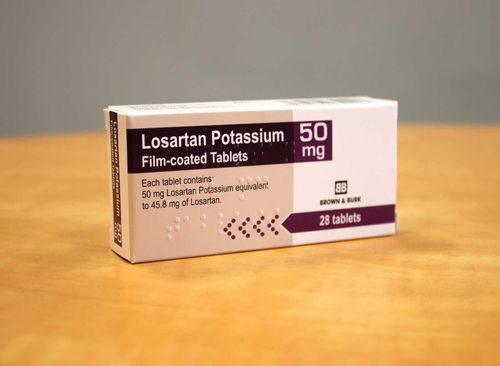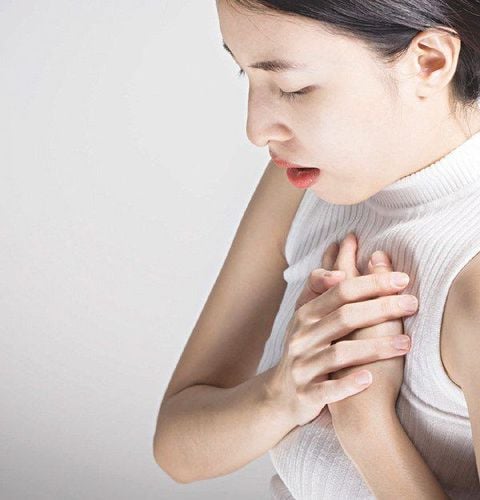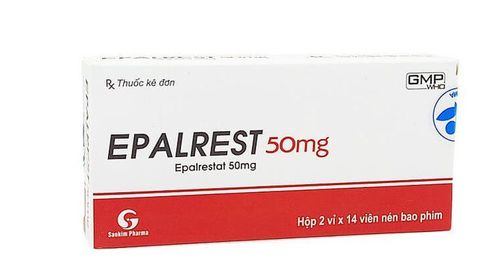This is an automatically translated article.
Numbness in the limbs after a stroke and other unusual sensations in the limbs, as well as other parts of the body, are common after a stroke. These latter effects can significantly affect the quality of movement as well as jeopardize safety. In this article, we will discuss some helpful methods to recognize and be alert to numbness in the limbs after a stroke.
1. Causes of numbness in limbs after a stroke
A stroke occurs when blood flow in the brain is obstructed. When brain cells are deprived of oxygen-rich blood, they begin to die and lose function.
The area of the brain affected by the stroke determines the secondary effects that occur. When brain cells are damaged after a stroke, that area of the brain has difficulty directing nerves and cells that control motor functions. They tend to have trouble processing sensory receptors, leading to numbness in the limbs in people who have had a stroke.
To recover, new connections must be made to bring new, undamaged cells into the control body part where function was lost. Similar to the loss of motor function in a limb after a stroke, numbness occurs because the part of the brain that controls that limb has been damaged. When the cellular connections in the brain are damaged, the brain will work to compensate for the lost signal, or even send mixed signals. People experience many different types of sensations during this process, depending on where and how much the stroke has occurred.
Two brain regions that determine post-stroke numbness are: thalamus and occipital lobe.
The thalamus is responsible for explaining 98% of all sensory input. In other words, the occipital lobe distinguishes this input from the five senses, including touch.
Therefore, post-stroke numbness is often seen after a hippocampal or occipital stroke because these brain regions play a large role in sensory function.
How long does the numbness last after a stroke? Since every stroke is different, everyone recovers at different rates. Some stroke patients recover spontaneously when the sensation returns on its own. If this happens, it usually happens within the first few months of recovery.
However, if feeling does not return on its own, doctors recommend pursuing rehabilitation. The length of time it takes to recover from numbness depends on individual factors, including the location of the stroke and the intensity of rehabilitation.
Level of Rehabilitation Based on Rehabilitation Intensity The intensity of rehabilitation has a particular impact on recovery from the effects of a stroke.
Studies have shown that stroke patients recover quickly within the first 3 months but can remain at this level even at the 5 year mark if rehabilitation is not continued. The researchers hypothesized that the intensity of inpatient rehabilitation and the lack of acute post-acute care were responsible for this unfortunate phenomenon.
This does not mean that the patient cannot overcome the numbness after the stroke even though it has been longer than 3 months. It means pursuing rehabilitation well after 3 months for maximum recovery.
Even if neurological recovery has slowed, rehabilitation can continue for a lifetime.

Tê bì chân tay sau tai biến có thể ảnh hưởng đáng kể đến chất lượng vận động
2. Warning symptoms of numbness in limbs after a stroke
Numbness, tingling starting from the tips of the fingers and toes: Patients often feel that their fingers and toes are sometimes slits, between fingers, itchy, uncomfortable stinging. Cramps: The muscles are suddenly contracted, leading to dull pain in the upper arms and legs of the patient. Numbness spreading to the arms and legs: The patient begins to experience numbness all over the arms and legs, causing discomfort, accompanied by numbness and restriction of movement. Loss of sensation in hands and feet: Prolonged numbness in the limbs without intervention leads to a complete loss of sensation in the hands and feet.
3. Some measures to be wary of numbness in limbs after a stroke
3.1. Sensory training exercises
Numbness after a stroke is different from other types of anesthesia because the problems originate in the brain, not the local tissues. Therefore, the most common treatment for rheumatism is through sensory stimulation, also known as sensory enhancement.
This rehabilitation method is based on a process known as neuroplasticity, in other words the brain's natural ability to reorganize and repair itself and learn new functions.
You can try with sensory exercises like:
For example: You can collect objects of different textures (like coarse sandpaper, fine cotton wool, soft materials) and feel them without looking. Then, look at the object to verify your feeling is correct or not.
Although sensory retraining exercises can be especially difficult at first (especially if there's no sensation at all) the goal is for the brain to slowly recover through repeated stimulation.
3.2. Acupuncture
Acupuncture is an alternative treatment, it is described by inserting thin needles into specific points on the body. Sometimes electrical stimulation is applied to the needles after pricking, which is called electroacupuncture.
Studies have shown that electroacupuncture helps to promote neuroplasticity in stroke patients with impaired sound perception (such as numbness).
The study noted that patients showed a better response to tactile stimulation (such as sensory retraining exercises) than electrical acupuncture, but both enhanced neuroplasticity and recovery after stroke.

Châm cứu là biện pháp cảnh giác tê bì chân tay sau tai biến
3.3. Mirror therapy
Mirror therapy is most commonly used to promote motor recovery in the hand after stroke, especially when hand movement is severely affected. This makes it an excellent rehabilitation method for hand paralysis after a stroke.
Furthermore, mirror therapy has also been shown to improve feeling after a stroke.
It works by placing a mirror on a countertop on the person's affected hand. The instructor then practices various hand therapy exercises together with their unaffected hand while observing their reflection. This helps activate mirror neurons in the brain and encourages neuroplasticity.
Sensory recovery after stroke Numbness after stroke occurs when the brain is unable to process sensory input from the skin. It is not due to problems with the skin; instead, it's caused by the brain's inability to process sensory information.
Sometimes the sensation returns to the area on its own (spontaneous recovery). Other times, rehabilitation is needed to harness the power of neuroplasticity and help the brain retrain to process sensory information (such as your touch).
Some useful rehabilitation methods include sensory rehabilitation exercises, mirror therapy, and even electroacupuncture. Ask your therapist to help you get started with retraining your senses. You can also ask for any tips to improve your safety in everyday life, such as exercising caution in the kitchen.
Most importantly, never give up hope. Whether you experience spontaneous recovery or not, your chances of recovery improve when you take action. We wish you the best of luck on your road to recovery.
Vinmec International General Hospital is one of the hospitals that not only ensures professional quality with a team of leading medical doctors, modern equipment and technology, but also stands out for its examination and consultation services. comprehensive and professional medical consultation and treatment; civilized, polite, safe and sterile medical examination and treatment space.
Please dial HOTLINE for more information or register for an appointment HERE. Download MyVinmec app to make appointments faster and to manage your bookings easily.
References: saebo.com, flintrehab.com













